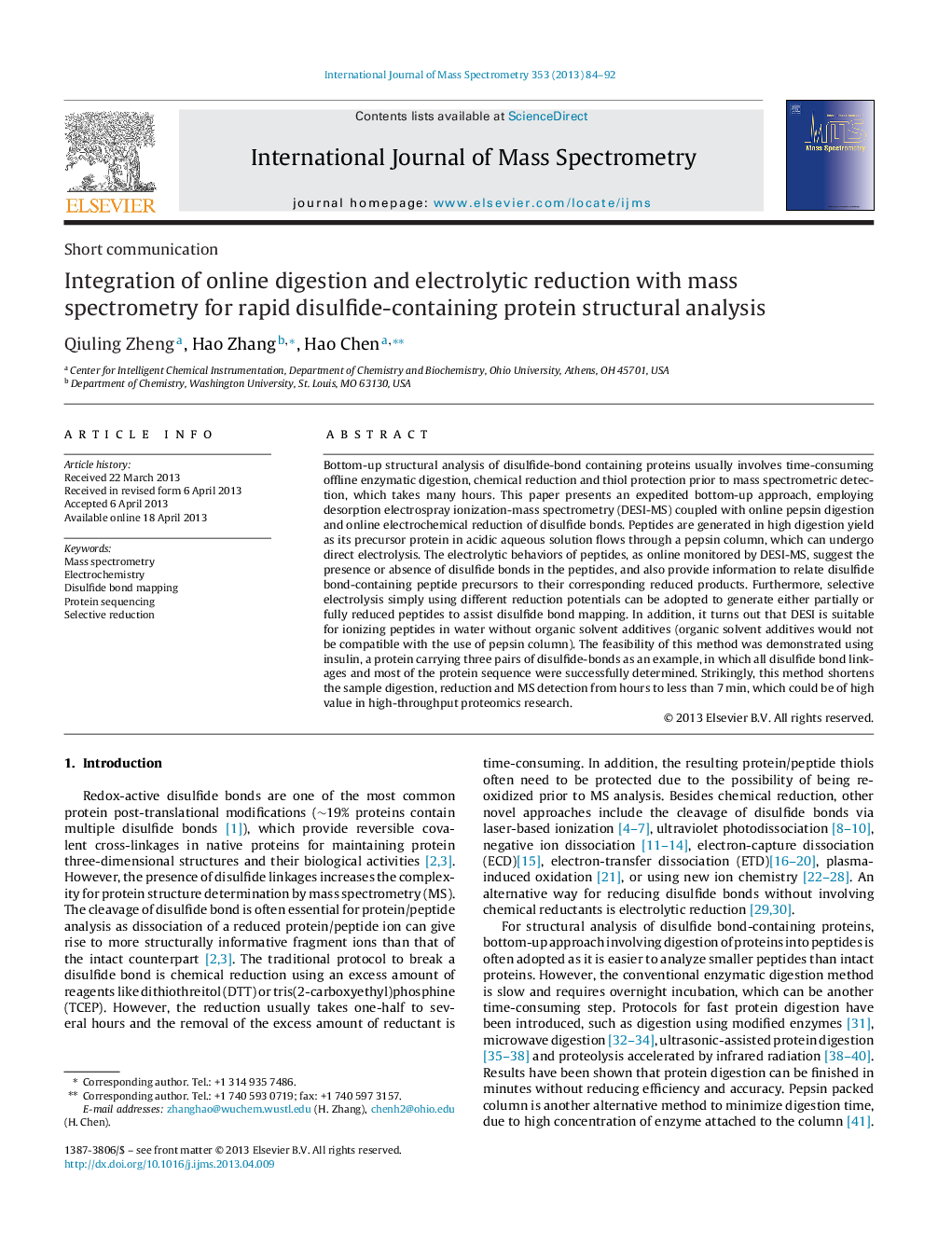| Article ID | Journal | Published Year | Pages | File Type |
|---|---|---|---|---|
| 1193318 | International Journal of Mass Spectrometry | 2013 | 9 Pages |
•Online digestion, electroreduction and DESI-MS are combined for protein structural analysis.•It takes <7 min to detect digested and reduced peptides.•Selective reduction can be achieved using different reduction potentials.
Bottom-up structural analysis of disulfide-bond containing proteins usually involves time-consuming offline enzymatic digestion, chemical reduction and thiol protection prior to mass spectrometric detection, which takes many hours. This paper presents an expedited bottom-up approach, employing desorption electrospray ionization-mass spectrometry (DESI-MS) coupled with online pepsin digestion and online electrochemical reduction of disulfide bonds. Peptides are generated in high digestion yield as its precursor protein in acidic aqueous solution flows through a pepsin column, which can undergo direct electrolysis. The electrolytic behaviors of peptides, as online monitored by DESI-MS, suggest the presence or absence of disulfide bonds in the peptides, and also provide information to relate disulfide bond-containing peptide precursors to their corresponding reduced products. Furthermore, selective electrolysis simply using different reduction potentials can be adopted to generate either partially or fully reduced peptides to assist disulfide bond mapping. In addition, it turns out that DESI is suitable for ionizing peptides in water without organic solvent additives (organic solvent additives would not be compatible with the use of pepsin column). The feasibility of this method was demonstrated using insulin, a protein carrying three pairs of disulfide-bonds as an example, in which all disulfide bond linkages and most of the protein sequence were successfully determined. Strikingly, this method shortens the sample digestion, reduction and MS detection from hours to less than 7 min, which could be of high value in high-throughput proteomics research.
Graphical abstractFigure optionsDownload full-size imageDownload high-quality image (109 K)Download as PowerPoint slide
